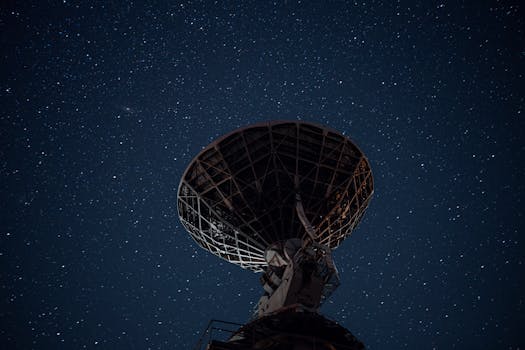The Future of Satellites: Revolutionizing Global Connectivity

The Future of Satellites: Revolutionizing Global Connectivity
The future of satellites is poised to revolutionize global connectivity, enabling faster and more reliable communication services. With advancements in space technology, satellites are becoming increasingly important for modern communication systems. Satellites play a crucial role in providing internet access, navigation, and communication services to remote and underserved areas, where traditional infrastructure is limited or non-existent.
Advancements in Satellite Technology
Recent advancements in satellite technology have led to the development of smaller, cheaper, and more efficient satellites. These advancements have enabled the launch of constellations of satellites, which can provide global coverage and faster communication services. For example, companies like SpaceX and OneWeb are launching constellations of satellites to provide global internet access. These constellations are expected to provide faster and more reliable internet services, enabling new use cases such as online education, telemedicine, and remote work.
Another area of advancement in satellite technology is the development of reusable rockets. Reusable rockets have significantly reduced the cost of launching satellites into space, making it more feasible for companies to launch constellations of satellites. This has also enabled the development of new business models, such as satellite-as-a-service, where companies can provide satellite services to customers without the need for significant upfront investment.
Applications of Satellites
Satellites have a wide range of applications, from providing internet access and navigation services to enabling remote sensing and Earth observation. Satellites can also be used for scientific research, such as studying the Earth’s climate and monitoring natural disasters. In addition, satellites can be used for military and defense applications, such as providing communication services and surveillance capabilities.
Satellites are also being used to provide communication services to the Internet of Things (IoT) devices. As the number of IoT devices increases, there is a growing need for reliable and efficient communication services. Satellites can provide communication services to IoT devices in remote and underserved areas, enabling new use cases such as smart agriculture and smart cities.
Challenges and Limitations
Despite the advancements in satellite technology, there are still several challenges and limitations that need to be addressed. One of the major challenges is the issue of space debris. As the number of satellites in orbit increases, there is a growing risk of collisions and space debris. This can have significant consequences, including the loss of satellites and the creation of more space debris.
Another challenge is the issue of regulatory frameworks. The use of satellites is regulated by international and national regulatory frameworks, which can be complex and difficult to navigate. There is a need for clearer and more consistent regulatory frameworks to enable the development of satellite services.
Conclusion
In conclusion, the future of satellites is poised to revolutionize global connectivity, enabling faster and more reliable communication services. With advancements in space technology, satellites are becoming increasingly important for modern communication systems. However, there are still several challenges and limitations that need to be addressed, including the issue of space debris and regulatory frameworks. As the use of satellites continues to grow, it is essential to address these challenges and enable the development of satellite services that can provide global coverage and faster communication services.